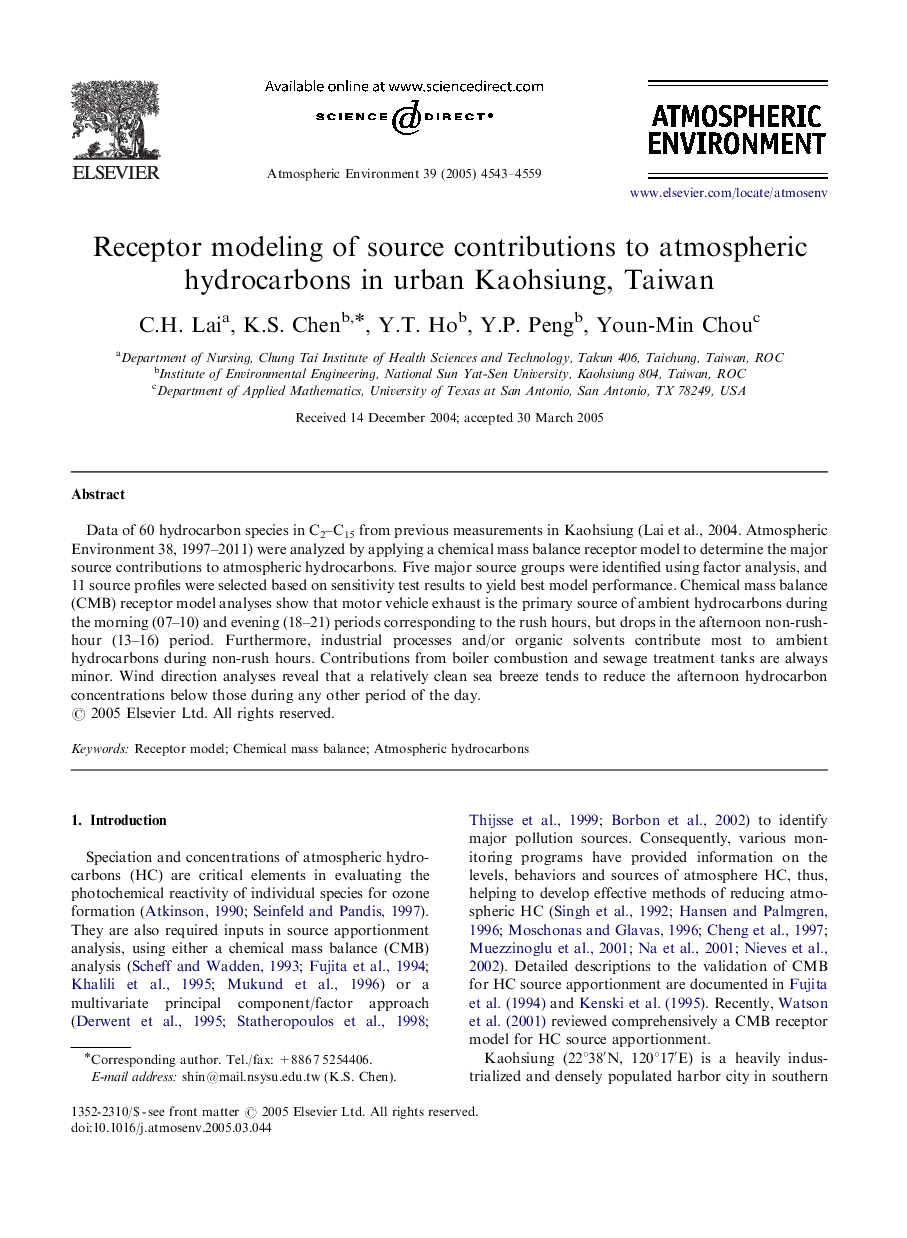| Article ID | Journal | Published Year | Pages | File Type |
|---|---|---|---|---|
| 4445227 | Atmospheric Environment | 2005 | 17 Pages |
Data of 60 hydrocarbon species in C2–C15 from previous measurements in Kaohsiung (Lai et al., 2004. Atmospheric Environment 38, 1997–2011) were analyzed by applying a chemical mass balance receptor model to determine the major source contributions to atmospheric hydrocarbons. Five major source groups were identified using factor analysis, and 11 source profiles were selected based on sensitivity test results to yield best model performance. Chemical mass balance (CMB) receptor model analyses show that motor vehicle exhaust is the primary source of ambient hydrocarbons during the morning (07–10) and evening (18–21) periods corresponding to the rush hours, but drops in the afternoon non-rush-hour (13–16) period. Furthermore, industrial processes and/or organic solvents contribute most to ambient hydrocarbons during non-rush hours. Contributions from boiler combustion and sewage treatment tanks are always minor. Wind direction analyses reveal that a relatively clean sea breeze tends to reduce the afternoon hydrocarbon concentrations below those during any other period of the day.
